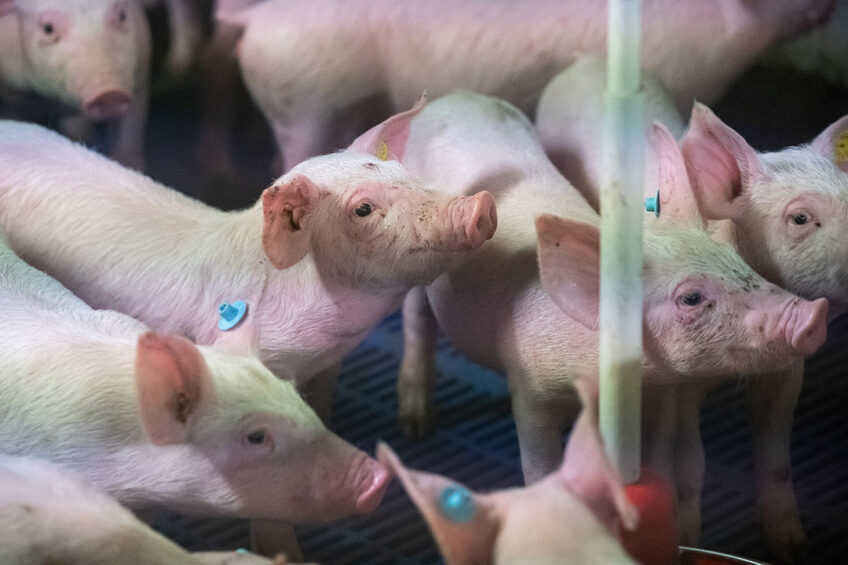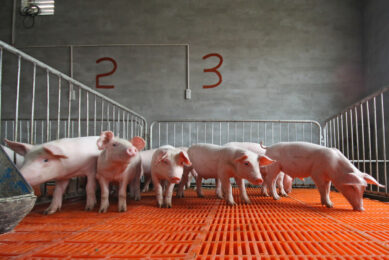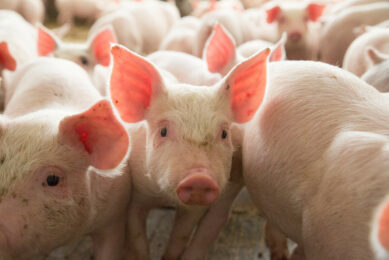Ileitis in summer? The right nutrition can help

Ileitis, a nagging gut health problem in pigs, is caused by the bacterium Lawsonia intracellularis. Vaccination is available as a solution, but it also pays off to understand when and why the bacteria can thrive. That helps to define pig diets in order to give L. intracellularis less chance, writes pig nutrition expert Dr Francesc Molist of Schothorst Feed Research.
Porcine proliferative enteropathy (PPE), often known as ileitis, is an important production intestinal disease with a huge economic impact. The prevalence of PPE is high (90%) and is caused by the Gram-negative intracellular bacterium Lawsonia intracellularis.
The bacterium invades immature intestinal epithelial cells, mainly in ileal crypts, leading to thickening and progressive proliferation of crypt cells.
Acute and chronic forms of ileitis
The acute form, also known as proliferative haemorrhagic enteropathy (PHE), is most common in young adult pigs between 4 and 12 months of age and is characterised by bloody diarrhoea and sudden death.
The chronic form, also known as porcine intestinal adenomatosis (PIA) with symptoms such as anorexia, reduced growth performance and diarrhoea, is the most common form of PPE and occurs in growing pigs between 6 and 20 weeks of age. PIA infections, on the other hand, are often subclinical, with pigs showing no symptoms.
Mechanisms of spread of ileitis
The exact mechanisms of spread are not known. Studies suggest that infected faeces are the major vehicle for movement of the organism around the farm.
Studies suggest that the organism can survive outside the pig for 2-3 weeks. To prevent this, disease management practices play an important role: good biosecurity and all in, all out procedures; wash out and disinfect pens between batches; avoid over stocking; reduce environmental stress and mixing of pigs. Vaccination might also be a possible solution but will also bring some costs associated.
Ileitis outbreaks in summer
In practice it is well accepted that during summer, especially on days that there is a big difference in temperature between day and night, outbreaks of ileitis in heavy pigs can occur. The mechanism underlying this phenomenon is not totally clear, but it can be speculated that it is linked to overeating. When pigs are exposed to high temperatures, they will reduce feed intake, when temperature drops at night or the next day, they will overeat to compensate.

Read Dr Molist’s column about 7 strategies to reduce feed costs
When pigs overeat the retention time of the digesta in the stomach is shortened, resulting in more substrate arriving at the end of the ileum and entering the large intestine. This excess of substrate might be used for L. intracellularis to over proliferate and cause an outbreak.
Limiting the amount of substrate
Therefore, it could be hypothesised that the proliferation of L. intracellularis could be prevented by limiting the amount of substrate arriving at the end of the ileum and entering the large intestine. Taking this into consideration the following feeding strategies could be advised:
- Reduce the amount of fermentable carbohydrates in the diets. Fermentable carbohydrates are an easy substrate that can be used by the bacteria to proliferate. Therefore, in summer time reducing the amount of fermentable carbohydrates in the diet will help to reduce the heat stress but also will avoid the proliferation of bacteria.
- Increase the level of inert fibre in the diets. Inert fibre will help to increase the transit time in the small and large intestine and will also not increase the proliferation of bacteria.
- Formulate low crude protein (CP) diets: reducing the CP in the diet will prevent CP fermentation in the large intestine reducing heat stress and the production of toxic amines that will also affect gut integrity.
- Increase the feed structure: fine pellet diets will have a shorter retention in the stomach and the passage of nutrients to the small intestine will be too fast resulting in too much of non-digested substrate arriving at the end of the ileum. Increasing the feed structure by adding coarse particles in the diet might increase the retention time of the digesta in the stomach resulting in a more gradual transition of nutrients to the small intestine. Nutritionists should aim for having 15% of the particles bigger than 1.4 mm in the diet in order to prolong the retention time in the stomach. Ideally, nutritionists should create this feed structure with fibre by-products with a low energy value such as wheat straw or sunflower hulls. In practice, if those feedstuffs are not easily available, then the feed structure could be created by adding coarse rolled barley into the diet.

Pigs tend to overeat
In conclusion, in summer time when differences in temperature between day and night are bigger, pigs may tend to overeat. Overeating will increase the substrate arriving at the end of the ileum that can be used for L. intracellularis to proliferate. To avoid this, nutritionists should focus on formulating diets that will enhance stomach retention time and will reduce the substrate arriving at the end of the ileum.











